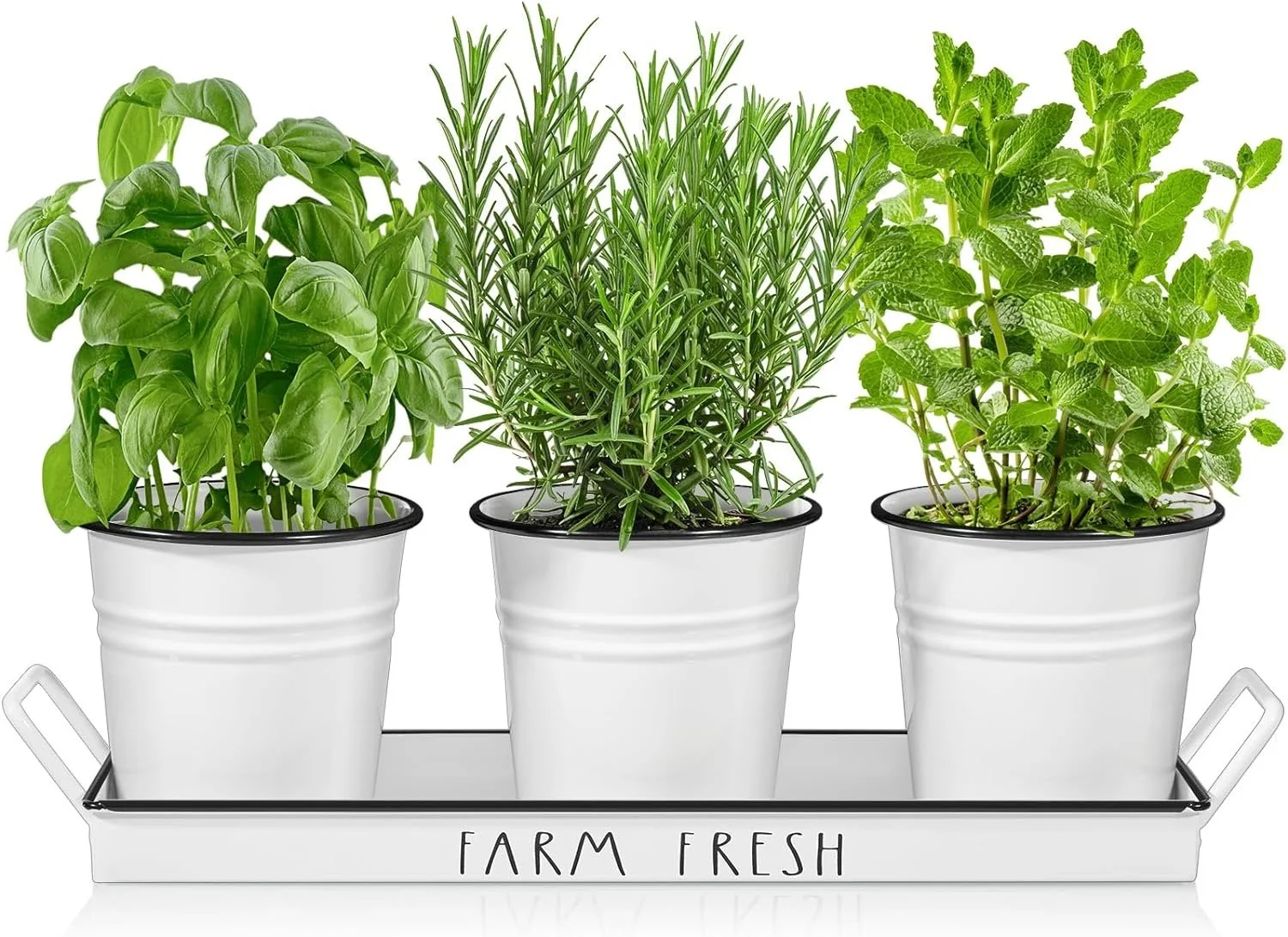Growing herbs in containers can add variety, fragrance, and a splash of color to a deck, balcony, patio, or any small space. Herbs can be used alone in containers or mixed with annual flowers or vegetables. Not only do these plants add a variety of color to the landscape and are good filler plants in perennial and herb gardens, they add flavor to your favorite food dish.
What kind of container? Anything that will hold potting media and has drainage holes. Drainage holes are an absolute must. The container should compliment and not compete with the plants that will be placed in it and should blend with the surroundings.
If you have used a container before, it is best to wash and sterilize the container before use. Wash with soapy water and sterilize with a one-part bleach to 10-part water solution.
Select a container large enough to allow space for root growth. For good root growth, most herb plants will need a soil depth of six to eight inches. Taller plants such as dill and fennel need at least a depth of 10 inches.
Container plants grow best in good-quality potting media. This mix should be sterile, have the ability to retain moisture, and allow for aeration at the same time. Container-grown plants need fertilizer throughout the growing season. Purchase a potting media with slow-release fertilizer or use a soluble complete fertilizer after planting.
Apply soluble fertilizers at a low application rate. Too much fertilizer will cause herb plants to grow quickly reducing flavor and aroma.
Herbs with compact growth habits grow best in containers. Drought-tolerant herbs do particularly well in containers. Tender perennial herbs such as rosemary are good choices as well. Plants with a trailing habit look nice cascading over the edge of a pot.
A 12-inch container will hold about three or four herb plants, while a 15-inch container can support about five or six plants.
Herb plants grow best in a full sun location that has some late-afternoon shade.
The most common problem with container gardens is under- or over watering. Over watering may promote root rot, fungal problems, or fungus gnats. Symptoms of over watering include wilting and reduced growth. Under watering symptoms include wilting and scorching. Apply water until it runs out the drainage holes. Containers dry out quickly so check containers at least twice a day on hot, dry, windy days.

